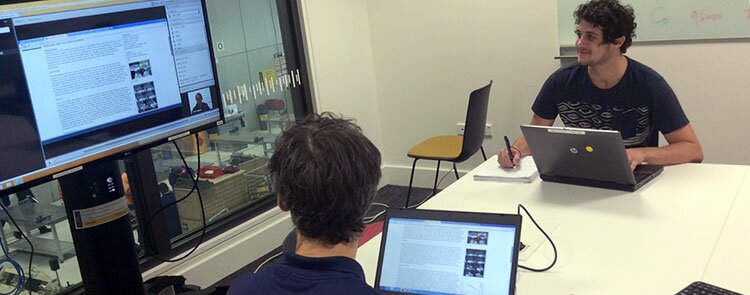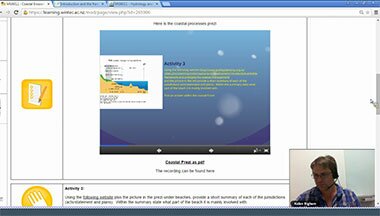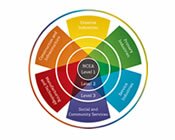EDUCATION LINKS CASE STUDY
Delivering an engineering course to students in three regions

Offering a range of option courses can be problematic; it requires not only tutors with specialist knowledge but also suitable teaching spaces and sufficient numbers of students to make classes viable. One response – delivering a course simultaneously in the classroom and online – has proved successful.
Wintec Civil Engineering Tutor Aidan Bigham teaches an optional Bachelor of Engineering Technology (BEngTech) course Hydrology and Erosion Management to civil engineering students in three regions. In Hamilton, students attend the class at the Wintec campus, while in Wellington and Christchurch the WelTec and CPIT students join the class via web conferencing. The students work together in the three-hour ‘real time’ lesson and are expected to do an hour’s individual work, to reinforce their learning or in preparation for the next class.
Now in its fourth year, the course usually attracts 10-15 Wintec students and 4-5 each from the other institutions, with students participating online or meeting together at their respective campuses. WelTec and CPIT set up a mentor for their students – this doesn’t require a course expert as Aidan takes over after that. He is responsible for preparing course materials, Moodle posts and email communication with students.
 Activity based
Activity based
Aidan has run the course since its inception and emphasises that it’s not a web conference where he is talking all the time. “It’s heavily activity based. I’m a big advocate of activity before content, especially in the online environment where it’s even worse to just sit and listen. This ‘activity first’ model is what I do in a ‘real time’ class, so my aim was to simulate this the best way I could online.”
Much of the course is based around regional council guidelines, though at times students can also choose which areas to study depending on their interest. For example, Aidan says, “If coastal management interests someone, I can bring in different activities to investigate it. Last year, a student was interested in the Palm Towers in Dubai being constructed on reclaimed land so we looked at coastal processes in that context.”
“Also, Wellington, Christchurch and Waikato have different coastal strategies, so we can compare and contrast them.”
Group work
Students usually work in geographic groups although Aidan can create groups of students from different regions if necessary. He talks to the class for about 20 minutes, about the theory behind the subject, where to find information, or to answer specific questions. Each group looks at their respective regional council guidelines, considering different aspects such as erosion and sediment control works. They give feedback to the rest of the class on what they have found, posting their conclusions on Moodle for others to compare and critique, and taking the opportunity to ask questions. Sometimes the whole class critiques, other times it might be a different group or just Aidan.
The critiquing acts as a way for students to interact with each other, “I don’t want them working as individuals, but as a group working towards the common goal.”
 Success
Success
The course has proved very successful. Although a few students have failed, “which is good” Aidan says “because it shows standards still have to be met”, the success rate has been high. Interestingly, every year the distance students outperform the in-class students – so much so that in the first few years Aidan had to work in class to ensure those students did as well, although he notes that it is evening up now. “Maybe it’s because the distance students are forced into the online world and therefore do all the activities I set up, whereas the others possibly think being in the physical classroom is enough and don’t complete everything. The distance students often have a deeper understanding because of that extra learning.”
Could this model of delivery work with other courses? Aidan says that his course is a theoretical, “wordy” subject, “A lot of it is judgments and following guidelines – it doesn’t have much maths or physics which can be harder to do in this environment.” However, Aidan also teaches a distance Physics course and says this still works as activity-based with a little content. And, he adds, the distance students outperform the classroom students in this course as well.
Many thanks to Aidan for his time and advice. If you have any questions, get in touch at .
September 2015
 |
 |
 |
||
 |
||||
 |
||||
 |






